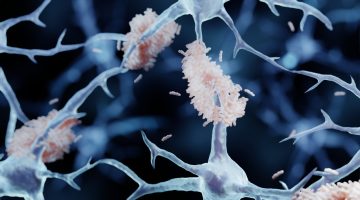GRANT. Jörg Hanrieder, associate professor in neurobiology at the Department of Psychiatry and Neurochemistry, together with fellow researchers in Chicago and London, has received a large R01 grant from the NIH. The project uses special mouse models to map how plaque forms in Alzheimer’s at the molecular level.
The project, called AmyMap, is led by Jörg Hanrieder together with Jeffrey Savas, assistant professor at Northwestern University in Chicago. The grant is about SEK 30 million, of which approximately SEK 15 million will go to Jörg Hanrieder’s team. Another co-applicant in the project is professor Francis Edwards, who is active at University College London, where Jörg Hanrieder also has connections as principal investigator.

New method
In partnership with Francis Edwards, Jörg Hanrieder has previously developed a new method that makes it possible to monitor the development of amyloid plaques in the brain in 3rd generation knock in mouse models of AD. The method was published last year in the journal Science Advances.
“The method, iSILK, involves metabolic in vivo labelling of proteins in the brain using stable isotopes that can then be measured and even imaged using mass spectrometry,” says Jörg Hanrieder, whose laboratory at Clinical Neurochemistry in Mölndal will be responsible for the chemical imaging of the mouse tissues.
Long before symptoms

Amyloid plaques begin to form in the brains of individuals who develop Alzheimer’s disease many years sometimes several decades before the disease results in symptoms. But exactly what happens in the brain during plaque formation is not fully understood.
“Because the method can be used to describe molecular and cellular processes that are linked to plaque formation, we can now obtain detailed information about how plaque formation occurs.”
Potential targets for pharmaceuticals
The research will identify both the individual molecules that contribute to plaque formation (amyloid peptides) and the smaller clumps of beta-amyloid (oligomers) that are most critical in the development of disease.
“At the same time, we’ll be able to identify other proteins at the individual cellular level that are affected by plaque formation. All of these are targets for developing therapeutic strategies as well as specific biomarkers. The latter, in particular, are not far from the clinic and has been successfully demonstrated for other other protein markers by Kaj Blennow’s and Henrik Zetterberg’s teams, with which we work closely together.”
BY: ELIN LINDSTRÖM











